Nazca lines and other amazing Earth art seen from above
- Published
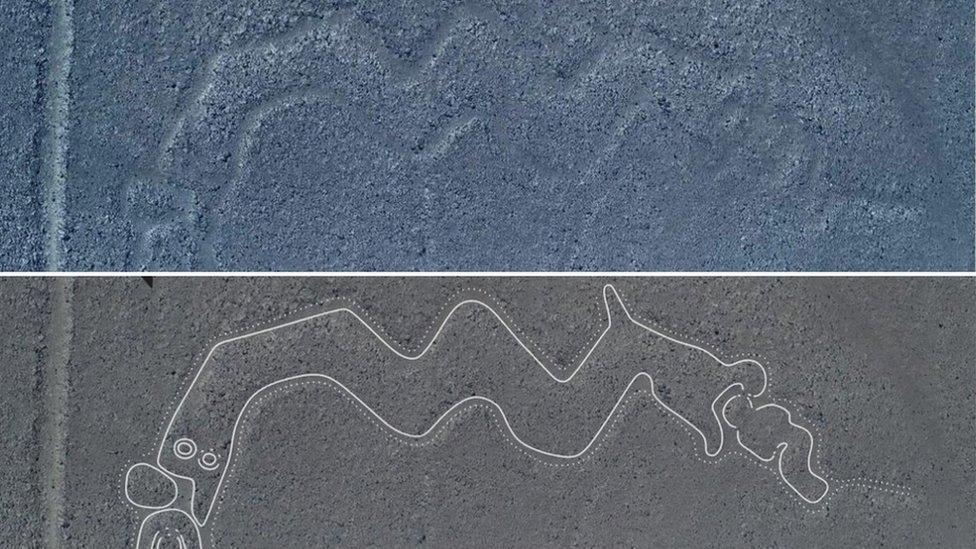
These images, taken by a team of experts from Yamagata University in Japan, have shown up 143 new huge line drawings which form part of Peru's famous Nazca Lines. The new discoveries are the result of a 15-year project combining satellite images with new ground surveys to show images that are invisible to the naked eye. This one shows a two-headed serpent eating human figures - yikes!
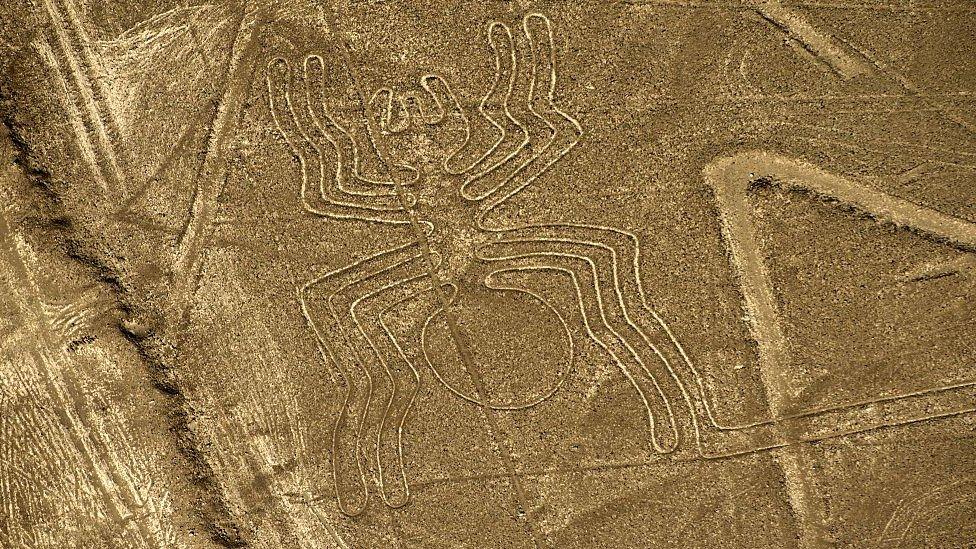
The Nazca Lines, known as geoglyphs, were made from around 2,500 years ago up to AD 600. This spider is one of the most famous, along with a hummingbird and a whale. No-one knows why the art was drawn but they seem to be positioned along pathways through the deserts of Peru.
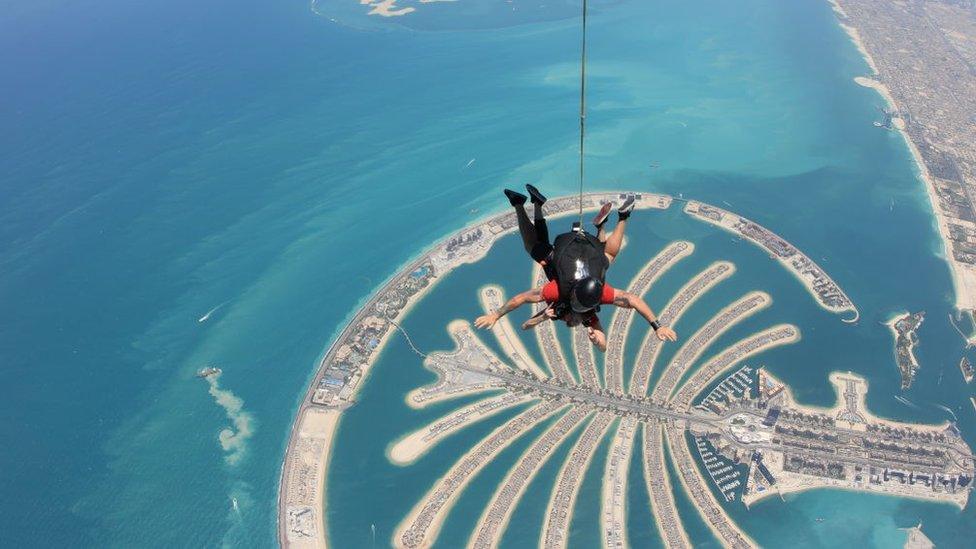
From ancient to modern - this is a picture of a man skydiving over the Palm Island of Palm Jumeirah. It's an artificial island built on the coast of Dubai, United Arab Emirates. It's the only finished one of a planned series of islands. Creation of the islands started in 2001.
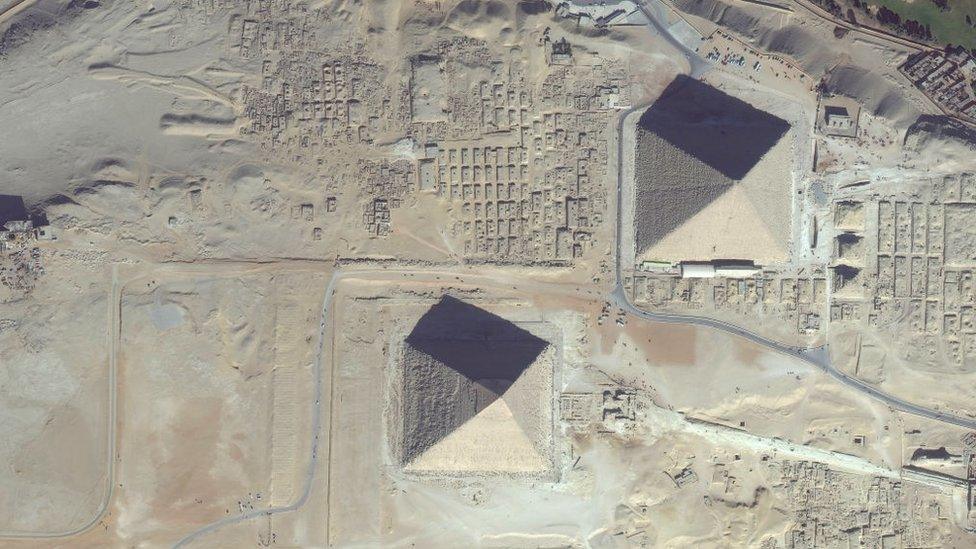
Back to the ancient world and to the world-famous Pyramids. This satellite picture shows part of the Great Pyramids complex at Giza, just outside Cairo in Egypt. The whole site includes the Great Pyramid of Giza, the Pyramid of Khafre, and the Pyramid of Menkaure, along with the Great Sphinx of Giza. All were built during the fourth dynasty of ancient Egypt and are thought to have been used to bury the remains of the dead pharaohs.
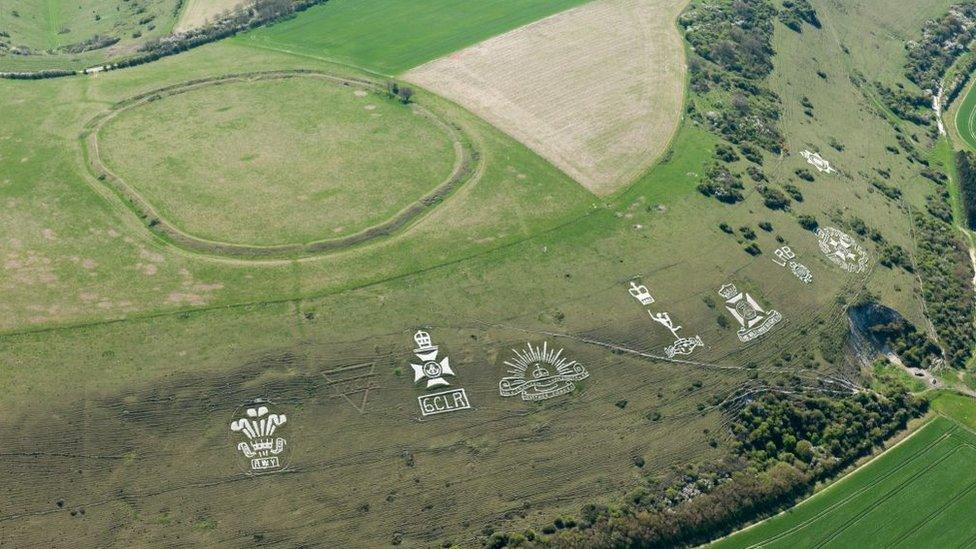
These amazing art works are the Fovant Badges in Wiltshire. Created by soldiers waiting to go to France, during the First World War in 1916 and 1917 they were cut into the chalk hills of Fovant Down between Salisbury and Shaftesbury. Nine of the original twenty remain, and are recognised by the Imperial War Museum as war memorials. Further badges have been added more recently.
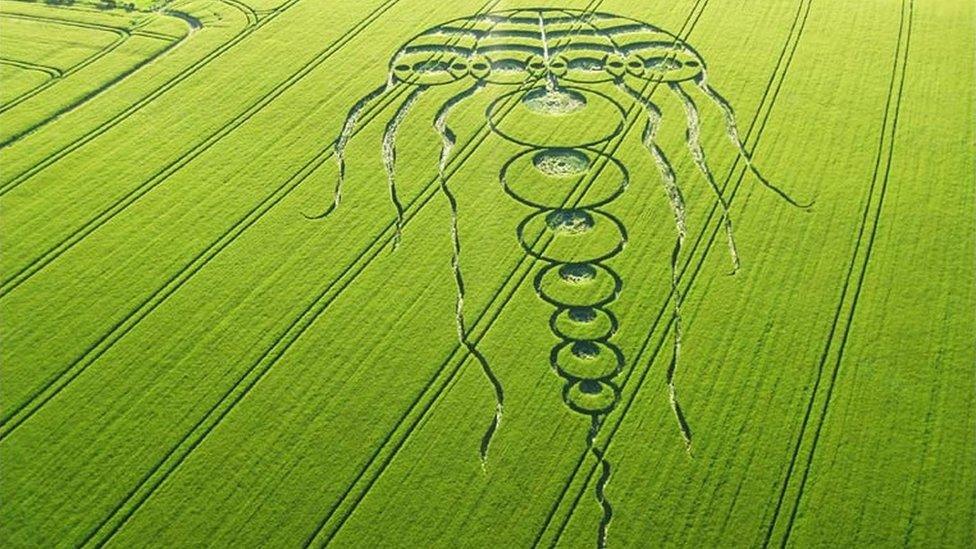
Look at this amazing crop circle which appeared on farmland in Oxfordshire in 2009. No-one knows who made the 250m-long image of a jellyfish but for mathematicians out there, astrophysicist Michael Reed said the design was a coded image representing the first 10 digits, 3.141592654, of Pi (π).
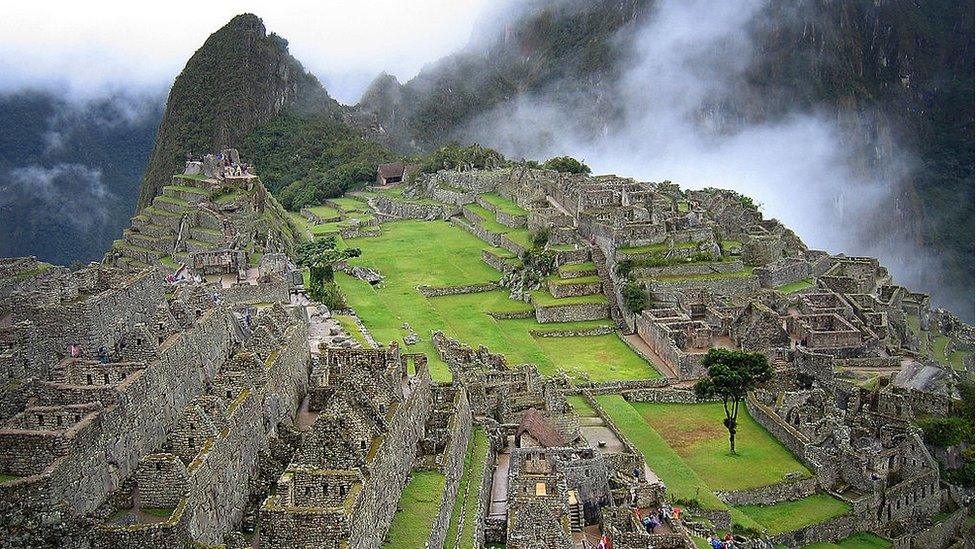
To South America and Peru again and to the site of Machu Picchu. Most archaeologists believe that the Inca citadel was built as an estate for the Inca emperor Pachacuti (1438–1472) and it's now one of the most famous ancient sites in the world. Sadly, the number of tourists has led to fears of damage to the site and the government is restricting the number of visitors who can go there.
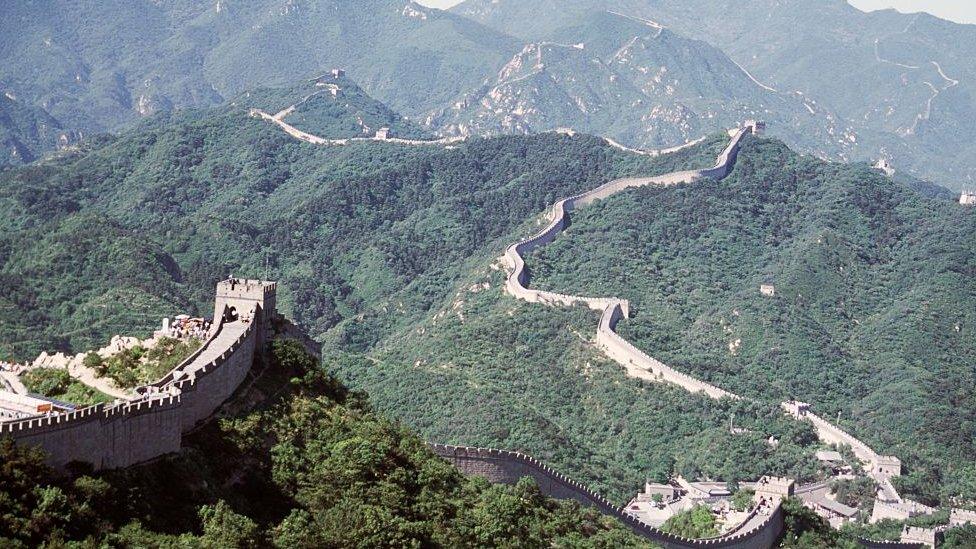
To the other side of the world now and to the Great Wall of China. Built as a series of fortifications along what was the northern borders of China, the most well-known sections were built during the Ming dynasty (1368–1644). One survey found that the entire wall with all of its branches measures 21,196 km, which is further than the UK to New Zealand!
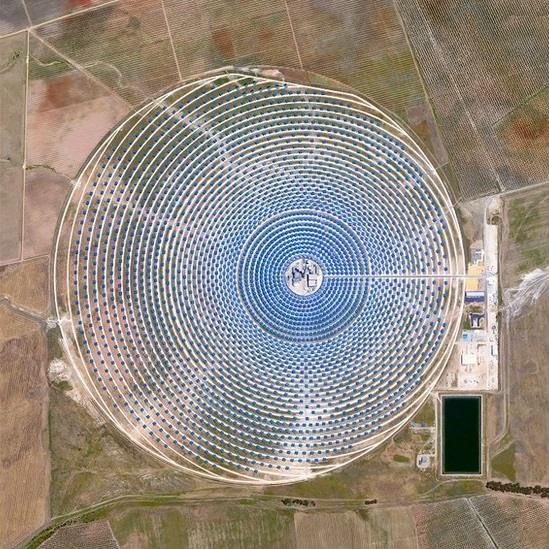
This stunning photograph is of the Gemasolar Solar Concentrator in Seville, Spain. It contains 2,650 mirrors that focus the sun’s thermal energy to generate electricity. Pretty cool!
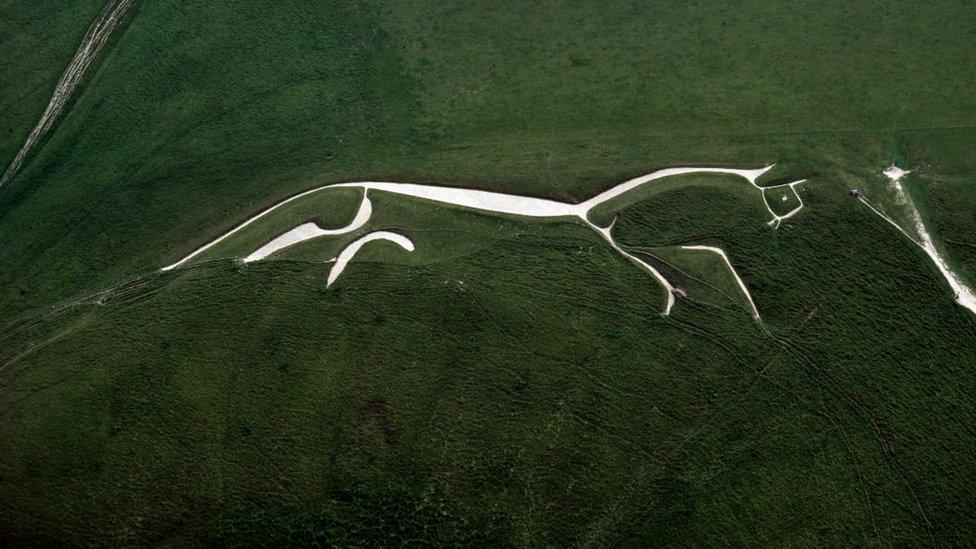
The Uffington White Horse is a prehistoric hill figure in the UK, formed from deep trenches filled with crushed white chalk. The carving is on the upper slopes of White Horse Hill, east of Swindon. It's 110 m long and a survey of the site in 1990 dated parts of it to the Bronze Age, some time between 1380 and 550 BC
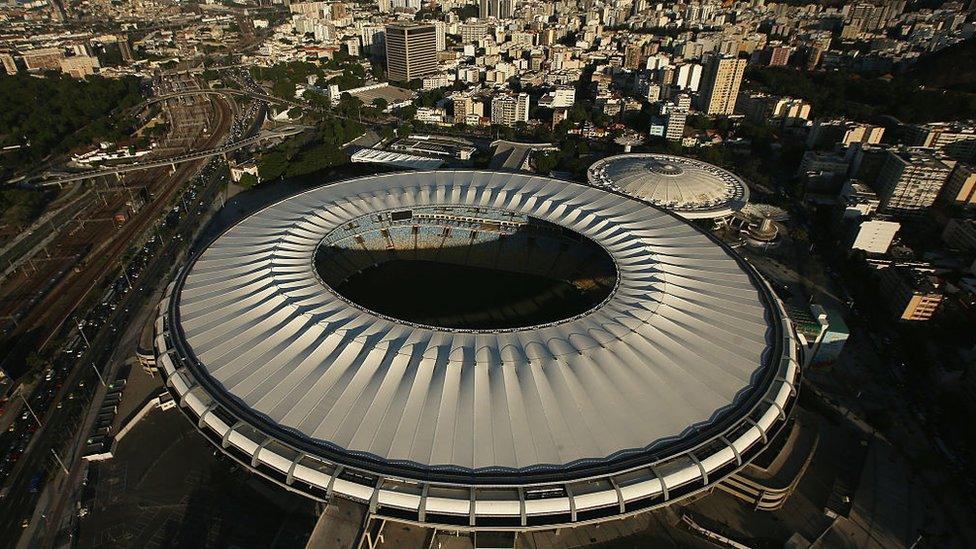
Sticking with the current day, sports stadia are often best viewed from above to get a proper look at the architectural design. This is the famous Maracana Stadium in Rio de Janiero, which is a legendary football stadium that was also used during the Rio 2016 Olympic Games and the 2014 World Cup in Brazil.
- Published22 February 2019
- Published9 February 2018
- Published14 May 2019
- Published14 April 2019
